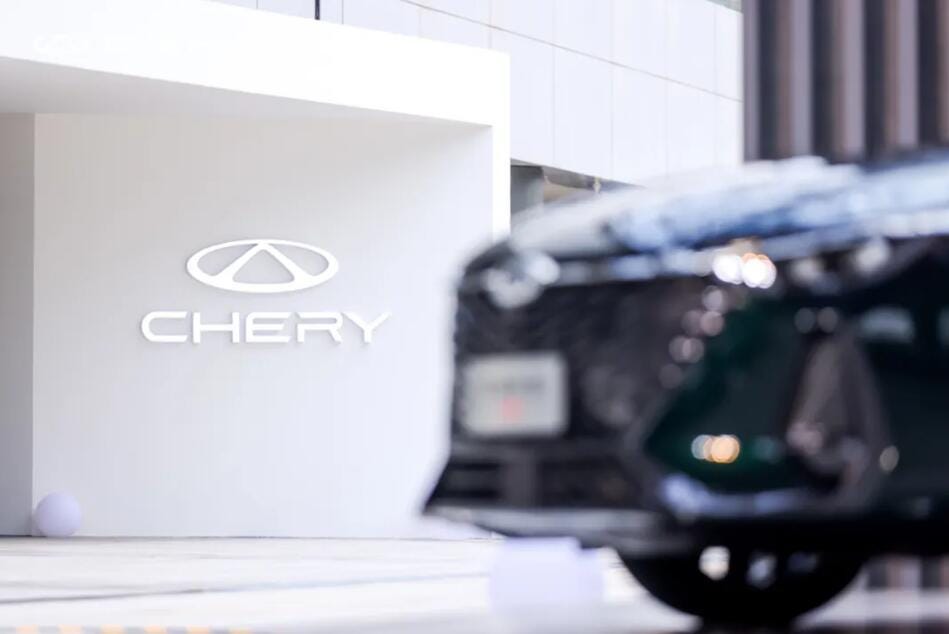Chery’s Global Bloom: Loved Abroad, Ordinary at Home
Not About Chery Falling Short—The Domestic NEV Market is Just Brutally Competitive

Table of Contents
Things that caught our attention
Things that caught our attention
Tech Buzz China’s Rui Ma appeared on the Sinica podcast, together with Robert Wyne, to discuss the video game Black Myth Wukong. You can listen to the podcast or read the transcript here.
After appearing on the Let’s Talk Marketplace podcast in June to discuss Temu, Valerie and Ingrid invited Tech Buzz China’s Ed Sander to return for an update on Temu and Shein. Links to the podcast can be found here.
Pinduoduo’s stock prices dropped because of a profitability warning of management. But what’s behind this? We summarised an analysis by 36Kr here.
Is the potential dismissal of de minimis a blow to Shein and Temu in the US? Read our thoughts here.
Meituan has shifted its targets from GMV to number of orders. Read our summary on why this happened here.
Cracks have started to appear in top host live commerce. Read our summary here.
Just three weeks until the Tech Buzz China Autumn 2024 Investor EV Trip kicks off! The excitement is building—get ready to dive into the latest EV innovation.
Introduction
In early August, Chery Automobile Co. Ltd., made its debut on the Fortune Global 500 list, ranking 385th with a revenue of $39.09 billion. From January to August 2024, Chery sold a total of 1.5083 million vehicles, a 41.9% year-on-year increase. Of these, 788,000 were sold domestically in China, while 720,000 were sold overseas. In the fuel vehicle market, sales reached 1,235,412 units, up 27.6%, while new energy vehicles (NEVs) saw a significant growth with 272,847 units sold, marking a 187% increase. Chery became the only automaker in China to achieve growth in both NEVs and fuel vehicles, as well as in both domestic and overseas markets, during the first half of this year.
Despite these positive numbers, Chery still faces challenges. The company's sales are still dominated by fuel vehicles, with NEVs making up just 18% of total sales from January to August 2024, far below China’s average NEV penetration rate of 53%. Competitors like BYD, XPeng, and Li Auto have established strong positions in the NEV market, while newcomers like Xiaomi are gaining attention. Chery lacks popular NEV models and strong brand recognition in this sector, putting it at risk of falling behind.
To compete with leading automakers like BYD, Chery has ramped up its product launch pace since early 2024, introducing new models almost every two weeks, including plug-in hybrids, pure electric, and range-extending vehicles. Chery also joined Huawei's HarmonyOS Smart Mobility technology alliance, launching the Luxeed brand targeting the mid-to-high-end market.
Not long ago, Chery and Huawei unveiled the Luxeed R7 at the Chengdu Auto Show, a coupe SUV priced between 300,000 and 400,000 RMB, set to launch in September. The R7 represents Chery’s latest effort to enter the high-end NEV market, with Huawei's promotion boosting the model's visibility and compensating for Chery's marketing weaknesses.
In this edition, we will review Chery's journey from its founding to its global expansion, how founder Yin Tongyue rose from a small village in Anhui to a global arena, the reasons for Chery's struggles in the NEV market, and the pros and cons of its partnership with Huawei. Finally, we’ll explore Chery’s global ambitions and whether its sales and influence can catch up to rivals like BYD.
The Anhui Dream
Located in Eastern China, Anhui is the 22nd largest province in terms of area and the 12th most densely populated region. In China's auto industry, there’s a term "Anhui Gang (安徽帮)," which refers to industry leaders like Chery’s Chairman Yin Tongyue, BYD’s Chairman Wang Chuanfu, NIO’s CEO William Li Bin, NETA’s Founder Fang Yunzhou, and Huawei’s "Madman" Richard Yu Chengdong—all born in Anhui.
Yin Tongyue’s journey in the auto industry is closely tied to Anhui's history. Born in 1962 in a small village in Chaohu, Anhui, he studied automotive manufacturing at Anhui Polytechnic University. After graduating in 1984, Yin joined FAW Group (First Automotive Works) as a technician. He took advantage of China's opening up, visiting major car-producing countries like Germany and the U.S., and worked his way up to become a workshop director at FAW.
In the early 1990s, leaders in Wuhu, a prosperous city in Anhui Province, spotted an opportunity as China’s automotive industry began to take shape. In 1995, Wuhu officials discovered a second-hand engine production line from Ford in Europe and initiated the "951 Project," named as the top priority project in Anhui from 1995 to 2000. To gain automotive manufacturing experience, Wuhu official sent representatives to visit the FAW, where they connected with Yin Tongyue, a fellow Anhui native. After several discussions, Yin decided to join the ambitious project.
However, resources were tight; the project started with just 300,000 RMB (about 43,000 USD) in funding and no factory space. In 1996, Yin and a small group of engineers set up their office in an abandoned brick factory on the outskirts of Wuhu, laying the groundwork for the first generation of vehicles in a makeshift setting.
In 1997, the local government established Anhui Auto Parts Company with a registered capital of 1.75 billion RMB (250 million USD) and imported the Ford production line for $25 million. Yin proposed developing their own car brand, which became Qirui (奇瑞), meaning "unique" and "auspicious" in Chinese. Its English name, "CHERY," comes from the word "cheery" with one "E" removed. Officially, the company explains that this symbolizes Chery's commitment to never being satisfied with the status quo and always striving for the highest goals.
On December 18, 1999, Chery produced its first car, the "Chery Fengyun," but without a production license, it couldn’t be sold. In 2001, Wuhu partnered with SAIC Group, giving Chery a 20% stake and the license to produce cars. The Fengyun was launched at under 100,000 yuan and sold 28,000 units in its first year, generating 2 billion yuan in revenue. By 2002, sales reached 50,000 units.
In 2003, after SAIC exited, Chery became an independent company and introduced popular models like the Chery QQ, priced as low as 49,800 yuan (about 7,000 USD). The QQ’s affordable price made it a hit in the low-cost family car market, helping many Chinese families achieve their dream of owning a car at a time when having any car was a luxury. By 2003, Chery sold over 90,000 vehicles, establishing its market presence. The QQ continued its strong performance, with annual sales reaching 1 million units by 2011.

Today, Chery’s headquarters remain in Wuhu, and its largest shareholder is Wuhu Construction Investment Co., Ltd., holding 27.68% of the shares. This state-owned enterprise is controlled by the Wuhu State-owned Assets Supervision and Administration Commission, underscoring Chery’s enduring ties to government backing and support from Anhui’s local authorities.
From Low-End to High-End
Chery's development history can be divided into three phases: the initial phase, quality improvement, and the shift to NEVs.




